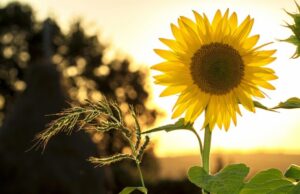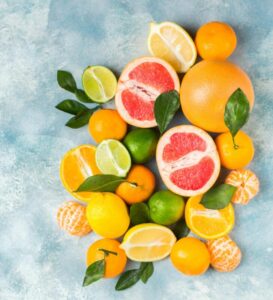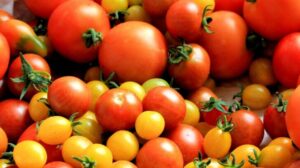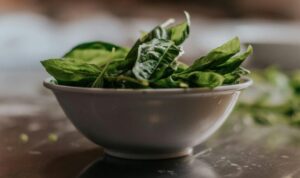Introduction
Aspects to consider when deciding what to plant
Environment
- Make sure the soil is suitable for the proposed crops. Take into account soil depth, texture, acidity and salinity.
- Study the rainfall and temperature pattern over the various seasons when deciding which crop can be grown successfully at different times of the year.
Planting dates
- Make sure of the correct planting dates of each crops and for each region.
Cultivar
- Ensure that the cultivar to be planted is adaptable to the prevailing conditions. Consider yield potential, tolerance to drought and acidity, length of growing season, disease and insect resistance, lodging, sprouting or prolificacy (multiple cobs) and intended use. However, in some instances, rotation of cultivars can be used to spread the risk of entire crop loss from infestation and to maintain a high biological diversity.
Note: The use of certified seed is highly recommended. Consult an expert, a seed merchant, or the local co-operative to obtain information on cultivars recommended for a specific area.
Seedbed preparation
- A plough or tined implement can be used for primary cultivation. Ploughing is, however, not recommended for sandy soils that are susceptible to erosion.
- Wind erosion is an important factor that should always be taken into account. In areas where wind is a problem, conservation tillage (zero or minimum cultivation and use of stubble or mulch) is recommended.
- The seedbed should be firm and weed free. In cases where wind erosion is a problem, the seedbed should not be too fine.
Planting spacing and depth
- Planting depth is determined by the moisture status of the soil, as well as clay fraction and the soil type.
- Generally bigger seeds can be planted deep and smaller seeds shallow.
- The spacing between plants is wider in low rainfall areas.
Planting method
- Most crops can be planted mechanically or by hand. In the latter case, a hand hoe or spade can be used.
- Do not compact the soil, but firm it down to ensure good soil/seed contact.
Fertilisation
- Make sure that the soil has sufficient nutrient content for crop growth by using fertiliser before planting and/or top dressing. Compost or organic matter (manure) should be applied three to four weeks before planting.
- Fertiliser can be applied when the results from soil analysis will tell you what nutrients are required in the soil, with the type of fertiliser to use recommended. To have soil analysed, contact the Department of Agriculture or ARC in your area, an extension officer, or one of the role players from the “Soils” page. The type of fertiliser best suited often depends on the expected yield and the previous crop (in the case of crop rotation).
- The optimum pH for most crops is 4,5 to 5,5 (KCI). Lime should be applied in the case of soils with a pH of below 4,5. Poultry manure also alleviates low pH problems.
Economy
- Before planting, note the inputs required and estimate the costs. Don’t look at the cost of individual products in isolation, but at the combination of them all. At times, you might need to invest more at the beginning of the season but will find you need to spend much less towards the end of the season.
- Consider product marketability before planting. Compare the input costs to the crop income.
Diseases and insect pests
- Crops belonging to the same family are often attacked by the same group of pests and diseases. Related crops should therefore not be included in successive plantings or even in the same three-year rotation programme (e.g. cowpeas, groundnuts, bambara groundnuts, soy beans).
- Pesticides should be used as recommended to prevent yield loss.
- Fields should be inspected on a regular basis to spot pests at an early stage, especially in the case of maize and cotton.
- Pesticides can be applied manually or mechanically.
Weeds
- A weed free environment during seedling emergence time is highly recommended because by the time the weeds germinate the crop will be well established and have a competitive advantage. Weeds can be controlled by hand, mechanically, or by the use of herbicides (especially when using conservation tillage), or a combination of the three methods.
- In the case of chemical control, particular attention must be given to herbicides’ residual periods, during which the remedy is active in the soil.If a system of crop rotation is followed, the herbicide applied may damage follow-up crops.
- Bear in mind that the clay fraction of the soil has an influence on the quality and quantity of the herbicide needed – refer to the product guidelines.
Remember: When using chemicals, you need to use protective clothing for your eyes, face and skin. You also need to ensure that all chemicals are stored separate from food, feed and seed and locked away from children. Remember too that it is important to read and follow instructions on labels.
Harvesting
- Most crops can be harvested mechanically or by hand. These methods can also be combined. If harvesting is done by hand, threshing can be either mechanical or by hand.
- Watch out for seed damage during harvesting (especially to legumes).
Gradual growth
- Do as much as possible in the first season. Spend as much as you can afford in the first season for inputs and increase expenditure in the second season (e.g. work on 1ha or less first and make enough money and gain enough experience to expand to 2ha or more in the second season).
Source: www.sansor.org – A Crop Guide for Emerging Farmers.
International business environment
“When you consider the huge percentage of people on the African continent who depend on agriculture for their livelihoods, you will appreciate that seed has the potential to be the single most transformational industry in Africa”. Tom Adlam of the Africa Seed Investment Fund (ASIF)
The South African National Seed Organisation (SANSOR) Annual Report, available on www.sansor.org, provides updates. Refer also to the websites below:
- African Seed Trade Association (AFSTA) represents the seed industry in Africa and the Indian Ocean islands. It is a non-profit, non-political association with a mission to promote development of seed industry and national seed associations, which will facilitate farmers’ access to improved varieties. Visit www.afsta.org.
- Read about the International Treaty on Plant Genetic Resources for Food and Agriculture at www.fao.org/plant-treaty/en/. Information about the Nagoya Protocol is available at www.cbd.int/abs.
- The Access to Seeds Index “measures and compares the efforts of the world’s leading seed companies to enhance the productivity of smallholder farmers”. View the Index at www.accesstoseeds.org/.
- Find the latest Mondor Intelligence report at www.mordorintelligence.com/industry-reports/seeds-industry
Other regional and international bodies include:
- International Seed Federation (ISF) https://worldseed.org
- International Seed Testing Association (ISTA) www.seedtest.org
- Global Crop Diversity Trust (Crop Trust) www.croptrust.org
- SeedQuest www.seedquest.com “Global information services for seed professionals”
- Association of Official Seed Certifying Agencies (AOSCA) https://aosca.org
- Asia Pacific Seed Association (APSA) http://apsaseed.org
- International Union for the Protection of New Varieties of Plants (UPOV) www.upov.int
- African Regional Intellectual Property Organization (ARIPO) www.aripo.org
Svalbard Global Seed Vault
Deep inside a snow covered mountain on a remote island in the Svalbard archipelago, halfway between mainland Norway and the North Pole, lies the Svalbard Global Seed Vault. It is a fail-safe, state-of-the-art seed storage facility, built to stand the test of time – and of natural or man-made disasters.
The purpose of the Vault is to store duplicates (“back ups”) of all seed samples from the world’s crop collections. Permafrost and thick rock ensure that, even in the case of a power outage, the seed samples will remain frozen. The Vault can therefore be considered the ultimate insurance policy for the world’s food supply. It will secure for centuries, or longer, millions of seeds representing every important crop variety available in the world today.
Source: www.croptrust.org/our-work/svalbard-global-seed-vault/
Local business environment
South Africa has a relatively well-developed seed system operated by local and multinational seed companies alongside informal operators. For more on what is happening in South Africa, find the latest Annual Report on www.sansor.org. Included are reports given by the Chairman and General Manager, and matters like the following are covered:
- Agronomy
- Horticulture
- Forage
- National Seeds Certification
- Plant Breeders’ Rights Licences
- Phytosanitary Issues
- Seed Analysts
- Industry Promotion and Capability Development
- Genetically Modified Seed
- Industry Issues
Another source of useful information on the website would be the “Market data” menu option. Information about the imports and exports of seed can be found under “Phytosanitary Matters”.
National strategy and government contact
Legislation
Find notes on the Plant Improvement Act, 2018 (Act No. 11 of 2018), the Plant Breeder’s Act, 2018 (Act No. 12 of 2018), the Agricultural Pests Act, 1983 (Act No. 36 of 1983) and the Genetically Modified Organisms Act, 1997 (Act No. 15 of 1997) at www.sansor.org.
Department of Agriculture, Land Reform and Rural Development (DALRRD)
Find details of the following directorates of DALRRD at www.old.dalrrd.gov.za:
- Directorate Plant Production
- Directorate Genetic Resources
- Registrar Plant Breeders Rights
- Registrar Genetically Modified Organisms a
- Official Seed Testing Laboratory
- Plant Genetic Resources Centre (PGRC) National Gene Bank
- Directorate Inspection Services
The Official Seed Testing Station (OSTL) is based at Roodeplaat. The OSTL has as its aim to ensure the physical and physiological quality of seed. Its functions include the development of policy and guidelines for the physical and physiological quality of seed and also to control, investigate and maintain seed quality.
A system has been introduced whereby private and company seed testing laboratories are able to register and conduct tests for own purposes, test seed for certification purposes and also advertise their testing services at a cost.
Associations involved
- Grassland Society of Southern Africa (GSSA) www.grassland.org.za
- Seedling Growers Association of SA (SGASA) www.seedlinggrowers.co.za
- South African National Seed Organisation (SANSOR) www.sansor.org SANSOR was established in 1989, and assumes the position of watchdog to ensure that standards are maintained. SANSOR has been appointed as the designated body to administer seed certification schemes under the Plant Improvement Act of 1976. The South African Seed Certification Scheme is a legally prescribed scheme underwritten by provision of this legislation. However, participation in seed certification is voluntary. The basic objective of seed certification is to make seed of superior quality available and guarantee the quality by means of a certificate, seal and label. The emphasis is on genetic quality i.e. varietal true-to-type, with high requirements of germination and physical purity. Strict field requirements are laid down for seed production.
- Southern African Plant Breeders’ Association www.sapba.co.za
Training and research
Find this heading in the “Biotechnology & plant breeding” page for details of the universities, Agricultural Research Council (ARC) and Council for Scientific and Industrial Research (CSIR).
Training of seed inspectors began with SANSOR and developed into an ongoing programme. Private seed inspectors report to SANSOR in the execution of functions under the certification schemes. Training courses for seed analysts have been ongoing.
Four AgriSETA-accredited training qualifications are (i) Further Education and Training Certificate: Seed Marketing (ii) Further Education and Training Certificate: Seed Processing and Packaging Control (iii) Further Education and Training Certificate: Seed Production, and (iv) Further Education and Training Certificate: Seed Research and Development. These qualifications are registered with South African Qualifications Authority (SAQA).
The Industry Promotion and Capability Development chapter of the Annual Report deals with skills development in this sector.
Learnerships and apprenticeships are a combination of on-the-job learning along with some theoretical training. The major part of the training can be offered on the farm. Find information on learnerships on the “Agricultural education & training” page, or at www.agriseta.co.za (under “Skills delivery” option). Options exist like seed production, seed research and development, seed processing and packaging control etc.
Companies involved
- Find SANSOR-member lists (by crop and by activity type) on www.sansor.org.
- Find contact details of nurseries on the “Floriculture and nursery crops” page.
Websites and publications
- Visit the websites listed earlier on this page, as well as those of the 120 plus members of SANSOR (find affiliated companies on www.sansor.org).
- The excellent Maize Information Guide (MIG) includes notes on cultivars. Download it from www.arc.agric.za.
- Find the many grower guides and production guidelines at www.dalrrd.gov.za, including Seed harvesting, Seedling production, Vegetables – Sowing guide and Vegetables – Sowing seed and planting seedlings.
- Companies involved supply customers with growing guides and technical information on how to get the most out of seeds supplied.
- An inventory of wild relatives to food crops has been compiled at www.cwrdiversity.org. This offers potential for plant breeders who could use genes to strengthen agricultural crops.
- SEEDcontrol is a project with a differing view of the seed market, namely that a consolidated market is bad news. Read more at http://seedcontrol.eu/en/market.php.
- Biowatch South Africa’s Outreach Facilitators give training in low-cost and organic agricultural methods. Included in this is the concept of starting a seed bank. Read more at www.biowatch.org.za.
Some articles:
- Find the Parliamentary Monitoring Group’s record of the Agriculture, Land Reform and Rural Development meeting “International Treaty on Plant Genetic Resources” (2023, October 17) at https://pmg.org.za/committee-meeting/37710
- Schroeder E. 2023, March 3. “‘Doomsday’ seed vault sees the addition of 19 500 new samples”. Farmer’s Weekly. Available at www.farmersweekly.co.za/agri-news/world/doomsday-seed-vault-sees-the-addition-of-19-500-new-samples/
- Majola G. 2023, February 6. “Load shedding threatens SA seed availability for next seasons, says Sansor”. IOL. Available at www.iol.co.za/business-report/economy/load-shedding-threatens-sa-seed-availability-for-next-seasons-says-sansor-0c267cb6-464e-4c5a-8cc4-63d50107d946
- Ibrahim A. 2019, September 23. “Africa can gain food security and wealth by building its seed industry, report finds”. Alliance for Science. Available at https://allianceforscience.cornell.edu/blog/2019/09/africa-can-gain-food-security-wealth-building-seed-industry-report-finds
- Lazarus, S. 2019, March 27. “‘Doomsday vault’ town warming faster than any other on Earth “. CNN. Available at www.msn.com/en-us/weather/topstories/doomsday-vault-town-warming-faster-than-any-other-on-earth/ar-BBVeFPE






